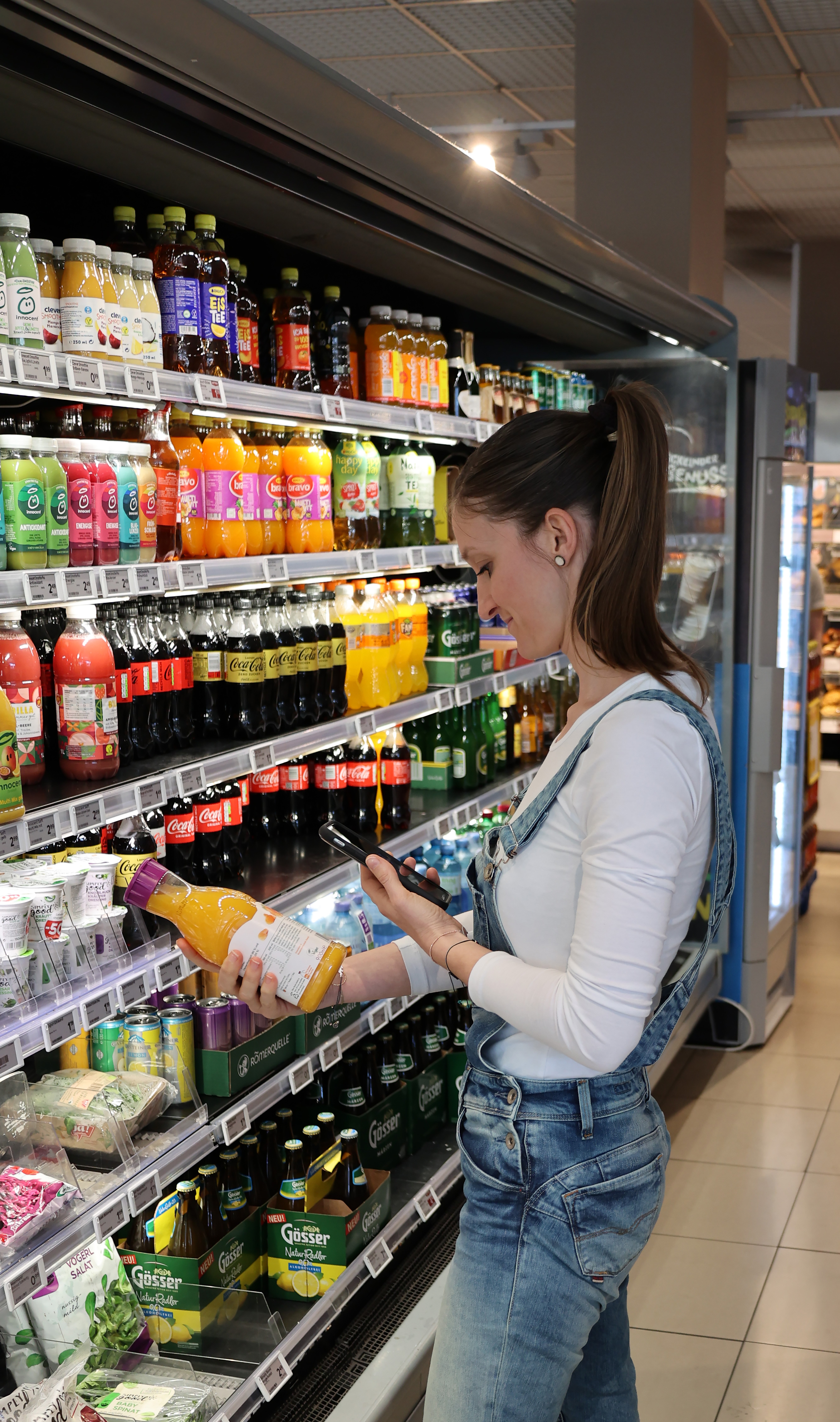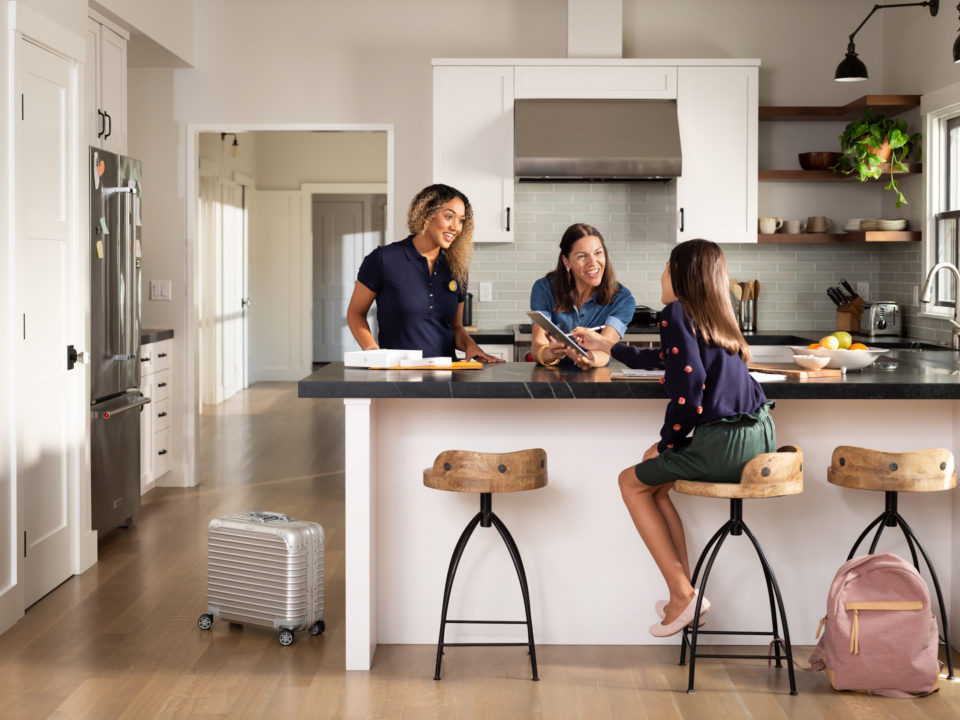Taking stock – Nedap explain how retail is waking up to RFID
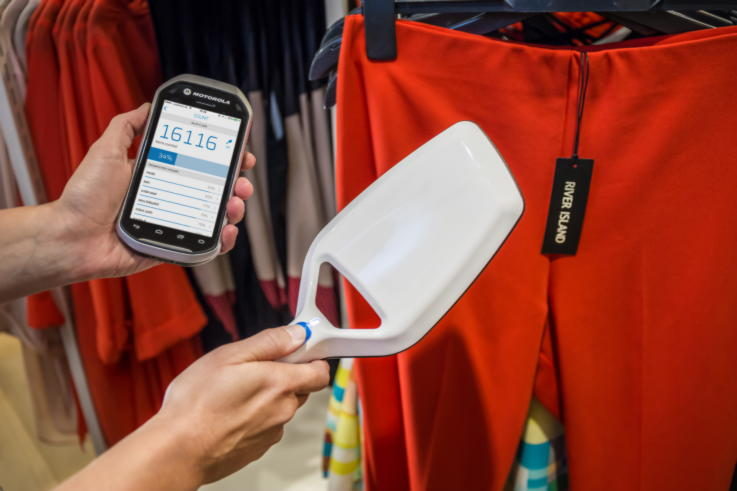
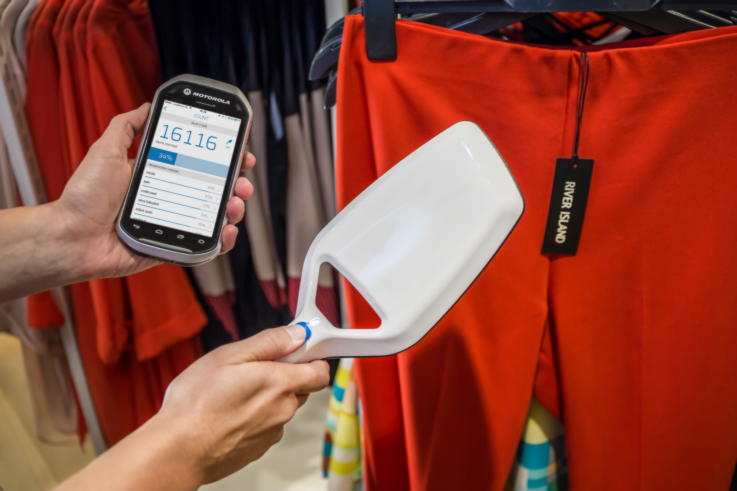
Radio-frequency identification or RFID is not a new technology. But it is a powerful one. As more and more retailers wake up to its capabilities, the potential for inventory control and omnichannel grows.
Leading the field is Nedap who has helped major names like River Island harness the benefits of RFID. Director of global sales & business development Jeroen Struycken talks us through the potential for the technology, why market developments are helping drive uptake and why it’s a solid return on investment.
Can you describe what your role is at Nedap?
I work on business development, so looking at immature markets and immature products. Especially the culmination of the two, so to see whether a retailer understands what they’re trying to achieve with the product. And to make it better with their input.
Once we’ve essentially matured the products in the market we hand it over to sales, who now have an incredible offering. They have an installed base of clients, which are happy with it. We’ve got all the functional features we need to convince most of the retailers out there.
RFID in retail market is now maturing quite fast, but it has been around for 10 years or more. There were only really innovators who started with a really immature solution. There were no standards, so being able to buy a piece of hardware from one vendor, then buy a piece of software from another and make it work together was a lot of work. Now you can just buy the solution partly off the shelf, and in essence, parts from multiple vendors all work together because there’s enough standardisation around.
Is the cloud a fundamental part of Nedap’s business?
Yes, absolutely. If you close your eyes and you think about retailer’s needs, it’s tomorrow’s consumers and demands. Today’s point of sale systems process data overnight only, so there’s no real-time information of what the store actually has in stock visible anywhere within the organisation. So retailers are trying to meet next day delivery, same day delivery, next hour delivery demands from shoppers today with technology that is not able to stomach that.
Whatever you build on legacy technology is not going to help you tomorrow, so you need to build on tomorrow’s technology. If you want to know at any given moment in time whether my local store has a specific item in stock now, then you need to know the data is available. You need to have real-time visibility of all products. Here, cloud is the solution. There is no other option out there that is able to deliver that to you for a couple of thousand stores.
The cloud will give you the opportunity to know that wherever you are at any given moment in time without lots of IT infrastructure required in the store. We believe that there is no other way to deliver tomorrow’s and today’s omnichannel services. You need a solution that gives you that real-time ability to process vast amounts of stock information in one central place.
You need RFID to be able to give you the accuracy. The best retailers not using RFID that I’ve seen have around high 80s percent in their stock accuracy. The average retailer has around 70 percent stock accuracy. That’s pretty bad if you want to advise a client if he can come to the store to pick up an item in an hour.
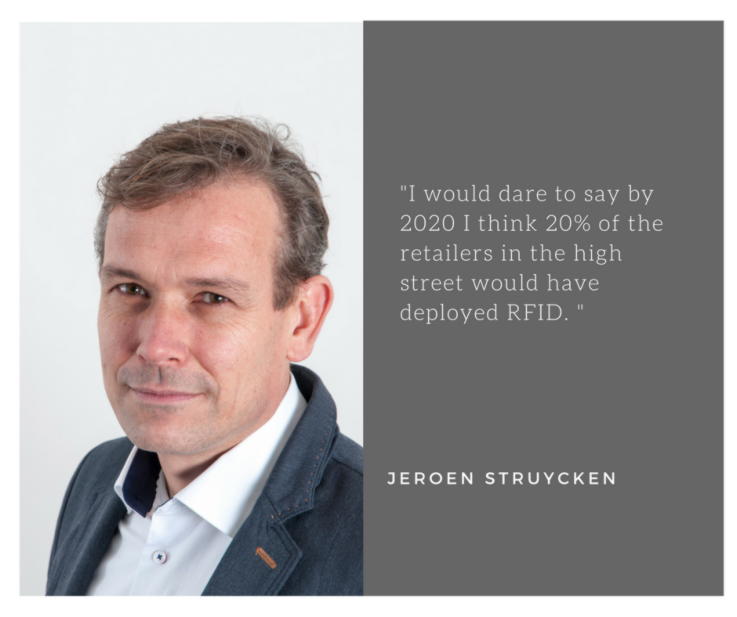
Can you tell me more about the cloud solution you have?
Our solution is a native cloud solution. The advantage of that is you can deploy the solution within a very short amount of time. All you need in the stores is RFID labels on the merchandise, an RFID reader and the !D Cloud app on a mobile device. All the data is processed in the cloud. We believe that this approach really fits the retail sector, because the internal work load and ongoing costs are limited. Store staff can be trained in a matter of minutes, because the solution is similar to other apps they use in their daily lives. After all, user-friendliness is key in making any RFID solution work in retail.
Another benefit is that we’re adding functionality to our cloud solution every day. We rapidly reiterate our development. We don’t release a new product every year or so now. We release new functionalities and fixes on a weekly basis. So the solution is constantly growing.
Is it true that with River Island you were able to get their stock accuracy to 97%?
They had around industry average, but RFID upped that to 97%, so a significant jump.
There’s an argument to be had about why not higher? It’s very simple. There’s a cost effort element involved. You can get higher certainly; it just costs more time and more money.
Why did River Island choose a native solution?
We’re a company that has thought about RFID application in retail, and said, “Okay, this is what a retailer really should need as a basis, so this is what you can get today from us.” We launch the product just to make sure you’ve got perfect store accuracy. We are maturing the product every day within enhancement of feedback from the retailer. But we also are not building it custom for River Island. We’re building a solution, which essentially is a one-size-fits-all, but we have serious debates with our clients about what are the functionalities that they need.
We’re not going to build a solution customised for one client because in the end we’re going to have 20 clients, each with their individual solution. That means that we will never be able to build a new feature and release it to everybody because we need to maintain 20 different applications. Essentially we made RFID into a product not a project.
They can still build up on top of the platform. That makes us an exception in the RFID landscape because everybody else is deploying customised projects. You tell me what you want as a retailer, and I’ll customise a solution to fit your exact needs.
For us if a retailer comes up with a great idea we put it into the software because it’s useful for everybody. Tomorrow you have a free upgrade of your system with functionality you never dreamed of. You don’t need to pay for it. It comes with the package just because you are part of a solution that keeps growing and accelerating.
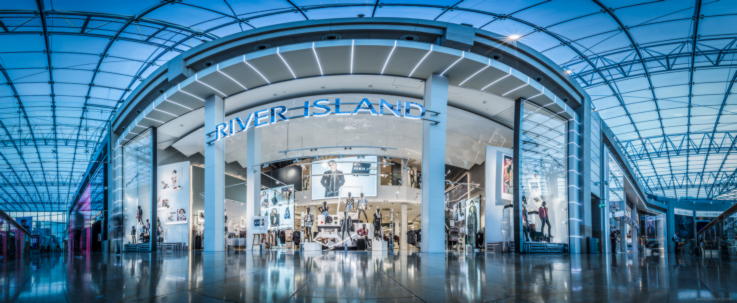
Do River Island have your solution in every store?
RFID is in all of the stores because they are source tagging. That means the products are getting an RFID label at point of manufacturing. So RFID-enabled products are now in every store, but they haven’t deployed it to all the stores yet. We want to wait until the majority of the products in the stores have an RFID tag. If you need to go into each and every store and tag the product with RFID then it’s just too laborious. They also chose not to extend it to everything in-store. At this point in time, shoes are not involved in the RFID deployment but all apparel is.
The ambition is to do that later on. They chose a staged approach so once they have the return on investment they will invest all of that money back again into making the project bigger and improving and adding product categories.
How many River Island stores are using the full system at this point?
The official rollout to 280 stores has started, so that means all the stores get the equipment and training. The solution we’re providing has a nice user experience. The RFID reader they’re using is a single-button device. The interface is on an Android device, and there’s just a few buttons to click to start counting.
If you’re up for an inventory count in the morning, you press the button that says count, and you select the location where you are – either shop floor or stock room. Then you just scan over the shelves to catch all the facts of all the merchandise on display. At the end of that, you press the button again to finish, and you’ve done your job.
It’s very important for the store to understand the value they are contributing. They’re contributing to a better customer experience. Doing the job right will trigger replenishment from the distribution centre and will trigger refill from the stock room, so that product availability is as good as it can get within that season in that store. At River Island, the goal was to have 5% uplift in sales and they well exceeded that because of better product availability. It’s nothing more than that.
How far away does the assistant need to be from the item to scan it?
In a normal situation you can be one or two metres away from the products and be sure to scan it. The perception of the person doing it is that they’re actually counting the products that they are standing in front of. But partly they’re counting the product, which is behind that rack of clothes or even partly behind them. If you waved across all the products from a distance of less than 50 centimetres, then you are 99% certain that you have the product.
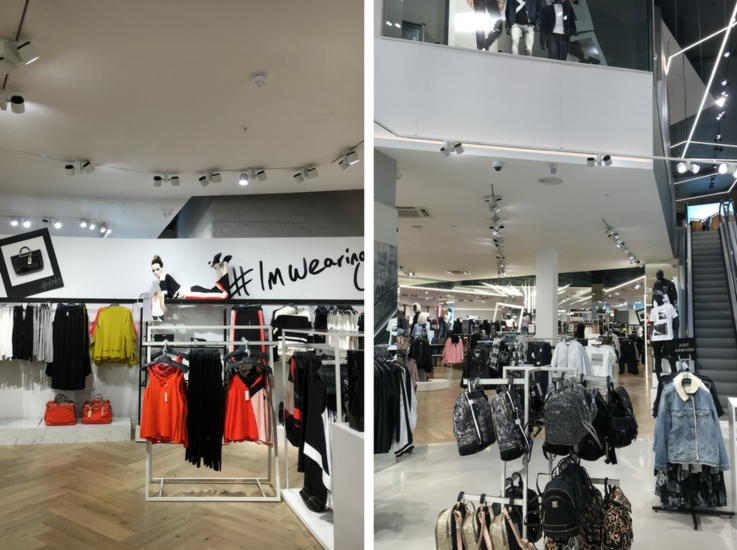
Are you thinking of having a way to automate that at some point?
There are two avenues that lead towards automating the manual task. You could argue that a robot could do a similar task. There are deployments of robots in the retail space, but only really for pilot purposes. That has to do with some limitations. A robot during opening hours is not really an option, so you could only do it when the store is shut. You could leave the robot to roam the store in the dark, but maybe you don’t also want to switch off your alarm system. That means that you need to have somebody there anyway. And that defeats the purpose of the investment in the robot as you still have to pay the hours of somebody to supervise the robot.
We believe that that is the next dimension is going to be a form of ceiling-integrated RFID readers. They need to be available at an acceptable cost and also aesthetically pleasing enough to be deployed, and technology is maturing towards it. There’s a lot of development being done in this space.
We need maturation of this technology so it becomes easier to install, a lot less cabling work, less antennas visible. Once the performance, aesthetics, and price have reached the right point that’s going to be to the standard. We’re going to see ceiling-mounted readers in the next 3-5 years that make it no longer necessary to do manual tasks.
I think though there are other solutions to concentrate on. I can see use cases for a continuous inventory solution, which are far better than automating the manual handling count. If I have an operating system that actually continually in almost real time knows the inventory of my store stock that’s powerful. I can do a lot more. I actually know that today an hour ago, I had this product but now it’s no longer there. Or actually it is there but it’s in a fitting room, so I cannot sell it online now because it’s being tried on by somebody. Or I know exactly where it is in the back-of-the-house and that it’s no longer on display.
Do you think these ceiling-mounted readers will be the standard five years from now?
Yeah, it will be the same as Wi-Fi. Not having customer Wi-Fi and trying to be an omnichannel retailer doesn’t make a lot of sense. It’s going to be the same with RFID. Even further away, the technology is so mature that you could say whilst I am deploying RFID, the RFID readers are also my Wi-Fi access point. It’s my Bluetooth beacon. It encompasses all these sensors, which I need to be put into my ceiling anyway, so we’ll all do it in one hit.
How much does each RFID chip cost at this point?
There’s a price and a volume aspect to chips. A label is a chip with a mini-antenna attached to it on a piece of plastic with a piece of paper on top and a sticky back. Essentially have a sticker tag. There’s quite a big volume of production capacity available whilst big retailers at this point are considering to start deploying RFID. The capacity is going to increase and increase and increase. There’s quite fierce price competition in the market even for volumes as low as 100,000 to 200,000 pieces. For a major retailer they need 100 million stickers per annum to do this.
The label and chip costs around €0.04. We estimate that in about two years from now it will be €0.03 because of this volume demand that is growing. It was €0.10 a couple years ago, so the price has dropped dramatically.
More than 80% of the cost of an RFID deployment sits in the RFID label. As the cost of the label comes down, all of a sudden a business case that wasn’t viable a while ago may become viable.
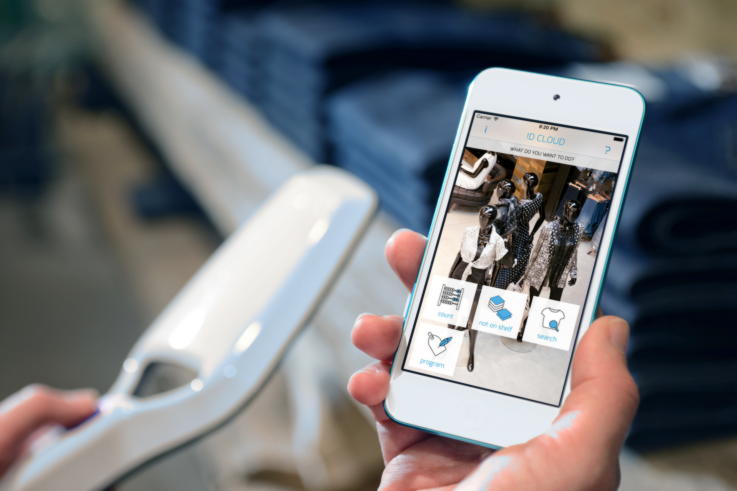
How easy is it to assign the RFID tag to an item?
Usually there is a hang tag with a price on it. That price sticker could easily be replaced by an RFID sticker. So the moment it gets printed it also gets encoded with the unique RFID identifier for that specific product.
The other option goes deeper, so you could replace the care labels in sewn into the product with one with an RFID in it. There are high-end fashion retailers that actually use the brand label, so you don’t see it at all. It’s an integral part of that brand label.
What’s the benefit of that?
The care label integration means that you know that for certain that the RFID label is going to stay with the product. There’s no chance that for some reason somebody pulls it off. It can’t fall off. It’s an integral part of that product. That’s one reason.
The other reason that high-end fashion retailers tend to do it is predominantly for product authentication. They are able to read and decrypt it with their own algorithm and say, “Okay, this actually is a genuine product of ours. It was manufactured then and then in this factory.”
What is the return on investment for retailers?
We have a cloud-based solution, which is relatively simple to deploy because there’s no hardware required in the stores. The only thing you need to get from us is a subscription for the store and an RFID reader. Then you need to download the app on an Android or an iOS device, and stick an RFID tag on every product. Then you’re in business with RFID. You are able to generate 97% stock accuracy within weeks.
If you are a retailer, and taking apparel fashion as an example where availability is key, if it’s not easy to make sure that all the product is actually available to sell in-store, then you have a challenge.
If you don’t have that challenge because you only have maybe 200 items in store then the return on investment of RFID may not be as fast as it will be for a typical retailer.
Altogether, there should be an uplift in sales of around 3-4%. If so, you already have a positive business case, and a positive business case means you get a return on investment in less than a year. It will never be more than a year.
If nothing else, then generating high stock accuracy leads to availability, leads to sales, leads to happy costumers. It increases your revenue by having very accurate counts and correcting and responding to those errors.
What are the typical challenges in setting up one of these projects?
River Island were essentially convinced from a conceptual point of view that RFID was going to help them on their omnichannel journey. But they wanted very much to make a plain business case. It is quite challenging to prove the sales uplift in the store, because so many things influence the store’s performance. It could be the collection, or the weather, new store manager, if the store was recently redecorated or refurbished.
How do you distinguish between the impact of RFID and all the other influences? You need to have a pretty good understanding that it was actually RFID doing that. We think we have a model that will stand for most retailers now, so that was a learning curve for us in this project to come up with the metrics to be able to prove sales uplift.
That’s the challenge that we see in many retailers. There’s also a need to keep it simple. The challenge that every retailer faces is that the moment you go into RFID, every stakeholder within the company wants a part of it.
If you bring it down to a business challenge, it’s essentially focusing on that one, two, or three use cases to really build a business case. If you’re considering deploying RFID, you need to go through the mundane stuff first. It is all about counting your stock and counting your stock fast, whether you do it handheld or automated. That count file improves your accuracy. You should leverage that impact. Once you’ve done that, you have accurate store information in your systems, which leads to product availability, which lead to sales. In the end, you’re generating money.
Now you have a chance to do something with that information. You can start leveraging forms of omnichannel because now I can guarantee click-and-collect order because I know it’s there.
The next step is all about analytics — understanding your customer and making your online customer and your in-store customer happy. Now you can start thinking about customer interaction elements. So identifying the customer, did they buy online, did they use the RFID mirror in the fitting room, do they have a loyalty card. Am I now able to really interact with them as a person?
I think then you’re practicing on what everybody wants to jump to today is that fantastic customer interaction element, but in the end, that will only work if the magic mirror doesn’t make a suggestion which is generic for somebody carrying this product in, but it makes a suggestion for you personally. Because we know you and what you like and you’re in the store today. You did all these things before, and did all these things online so this is my special suggestion for you.
To get to that point, you will need to go through the pyramid of needs first. If you haven’t done all of them, you will disappoint me because you’re making a suggestion of something that you actually don’t have in the store.
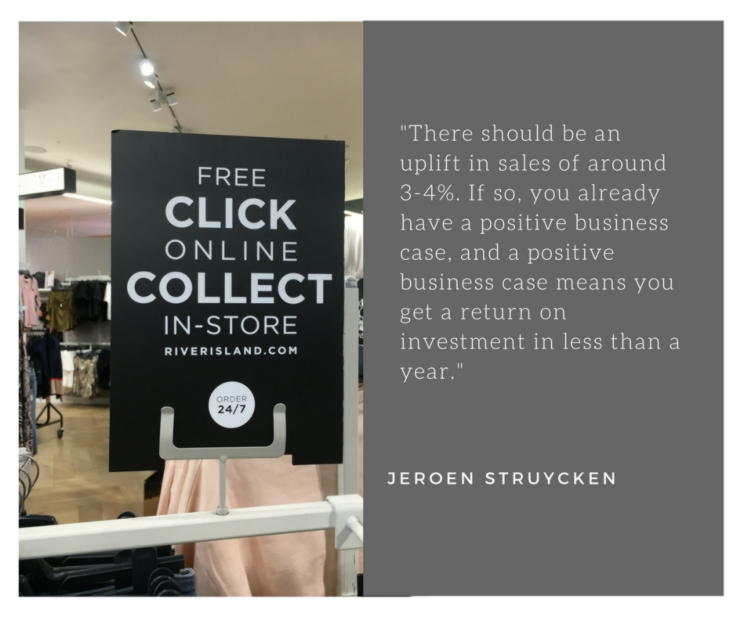
Where would you say the technology is on the adoption curve at the moment?
What I see now is that we’ve crossed the so-called chasm, this nothing happening in-between moment, between innovators and the early adopters. I think we are now well into the early adopter phase. The tender requests from major retailers pop-up and they are seriously considering thousands-of-stores deployments. It’s slowly growing towards early majority phase. If the retailers that say they are going to roll out do, then in 2018 we’re going to transition into early majority.
In 2020 will retailers be using this in a different way?
I think the technology is going to be in the world of the personalised shopping experience. That is not only to do with RFID. In the end, it’s going to be the brand experiences that are going to build up an environment where you aren’t necessarily going to buy, you’re going to be inspired. You’re going to want to be there, and you’re going to be loyal to the brand because it serves you. Whether that’s online or offline, you don’t really care; it’s the same to you because it’s the same brand.
RFID is going to enable that experience element of interactiveness, of really knowing me as a shopper. Being able to track my behaviour in the store just as well as you’re able to be track my behaviour online and I’m okay with that. I like that because it enhances my experience, and that’s the thing that I expect from the future stores.
It is very much to do with what is retail going to be in 2020. I think the power of the brand is going to come about much stronger than it is today.
We’re going to know more about inventory. What is moving, what is in fitting room, what was liked, what was put back. We know what was bought, and we also know who bought it and whether they checked the product online first before they actually bought it. We got a whole analytical wealth of data from customers and products together.
I would dare to say by 2020 I think 20% of the retailers in the high street would have deployed RFID. If you look at reports you will see that 80% are looking at it, or using RFID for a proof of concept for their store somewhere. But deploying, having it really in the store and using it, we’re going to be looking at 20%.
At this point in time, it’s maybe 7%. But with the names that I see popping up now in the market with clear ambitions to deploy, we’re going to really see some acceleration.
Sometimes I don’t know why they aren’t doing it. Why retailers are so stubborn in prioritising todays challenges and not prepare for tomorrow, because they always say, “There’s only so much time and money we can spend in a year, so we’re not going to look at it until next year.”
If you really dig deeper, some of them aren’t innovators or early majority. They’re late majority. In their nature, they will never be one of the first to do it. They will always wait until it’s proven and everybody else has it, then we’re just going to do it because everybody else has it now.
The other aspect is that if you want to leverage the fact that you have high stock accuracy, you’ll really be able to do that. If you now have a model where you ship 80% of your collection to the store and you only leave 20% in your warehouse, accuracy is nice, but I only have 20% of my stock to be able to do something with.
So maybe they need to shift to only pushing 25% of their stock to the stores and keep the rest in their distribution centre and be very agile in replenishing the stores. Because now I can leverage the fact that I know exactly what I have. I know exactly what it’s selling, where it’s selling, and where I need to send more. So you need to also adjust your processes behind to accommodate. If you’re unable to get in or unwilling then you’re not going to get the benefits that the people are that had made the leap to that and are ready for it.
Images courtesy of Nedap.


